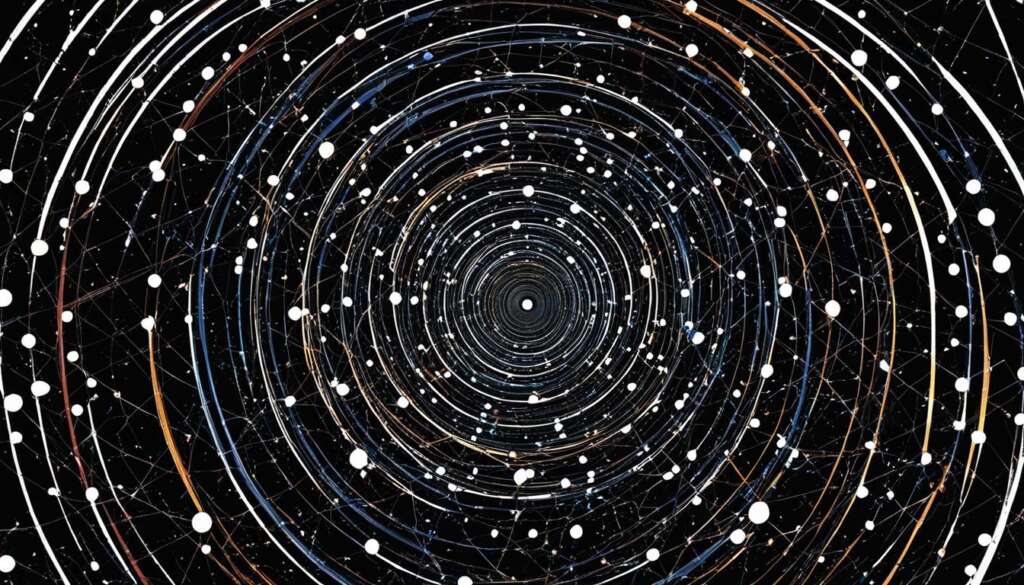Table of Contents
When it comes to studying geometry, one of the most fundamental concepts is the radius. The radius plays a pivotal role in determining the size, shape, and proportion of various geometrical shapes such as circles and spheres. In this section, we will provide an overview of the radius, its definition, and its importance in the realm of geometry.
The significance of radius is evident in its impact on circles and spheres, two of the most commonly studied and utilized geometrical shapes. The radius itself is defined as the distance between the center of a circle or sphere and any point on its boundary. It is typically represented by the lowercase letter ‘r’ and measured in units such as centimeters, inches, or meters.
From circles to spheres, the radius has a profound impact on the size and proportion of these geometrical shapes. In this section, we will explore the definition of radius, its significance in circles and spheres, and why understanding this fundamental concept is critical when studying geometry.
Key Takeaways:
- The radius is defined as the distance between the center of a circle or sphere and any point on its boundary.
- The radius is crucial to determining the size, proportion, and calculations associated with circles and spheres.
- The radius has a direct impact on the circumference, diameter, surface area, and volume of circles and spheres.
- Geometry principles utilizing radius are highly applicable in several practical contexts such as architecture, physics, and engineering.
- Understanding the significance of radius is vital to comprehending the principles of geometry as a whole.
What is Radius?
Radius is defined as the distance between the centre of a circle or sphere and any point on its boundary. It is denoted by the lowercase letter ‘r’ and is usually measured in units such as centimetres, inches, or meters. The radius determines the size of the circle or sphere, as it extends from the centre to any point on its perimeter.
For instance, if we consider the circle below, the radius would be the distance between the centre point and any of the points on its circumference:
The same concept is applicable to spheres. In a sphere, the radius is the distance between the centre of the sphere and any point on its surface. The following image illustrates this definition:
The Significance of Radius in Circles
The radius of a circle holds a significant place in circle geometry and is key to understanding the features of circles and their relationship with different mathematical concepts. The radius or ‘r’ is the measurement of the distance from the center of a circle to any point on its circumference. This fundamental measurement helps determine the size, proportion, and calculations of circles.
One of the most essential aspects of working with circles is the relationship between the radius, circumference, and diameter. The circumference of a circle is the measurement around its boundary or perimeter, which can be calculated using the formula 2πr, where π represents a mathematical constant of approximately 3.14159. Therefore, the circumference of a circle is directly proportional or related to its radius. The diameter, on the other hand, represents the distance between two points on the circumference, which are opposite ends of the circle and is twice the length of the radius. This relationship is expressed as the ratio between the circumference and the diameter, which is constant for all circles and approximates to 3.14159, referred to as ‘pi’.
The proportion between the diameter and the radius is an essential aspect of circle geometry and has several real-world implications, including engineering, architecture, and physics. With the help of simple formulas, calculations and problem-solving in these fields become easier and efficient. This relationship is expressed in simple formulas, including:
| Calculation | Formula |
|---|---|
| Circumference of a circle | 2πr |
| Diameter of a circle | 2r |
| Relationship between the circumference, diameter, and radius | c/d=π or c=πd or c=2πr |
The formulas emphasize the importance of the radius to determine various properties of circles, such as their area, circumference and diameter, aiding in solving mathematical problems in practical applications such as architecture, engineering, and physics.
Summary
In summary, the radius plays a crucial role in circle geometry, helping to determine the size, proportion, and calculations of circles. The relationship between the radius, circumference, and diameter provides a foundation for solving problems and exploring geometric relationships related to circles. With simple formulas and calculations, this relationship becomes easier to comprehend and apply in practical contexts.
The Importance of Radius in Spheres
When it comes to spheres, the radius is fundamental to determining various properties of these three-dimensional objects. The surface area of a sphere can be calculated using the formula 4πr², where ² represents squared. The volume of a sphere can be determined using the formula (4/3)πr³
These formulas emphasize the relationship between the radius and the size of the sphere, allowing for calculations in real-world applications such as architecture, physics, and engineering.
Surface area is a crucial concept when dealing with spheres. It represents the total area of the sphere’s outer surface. The formula for surface area highlights the importance of radius in the calculation. As the radius increases, the surface area increases exponentially. This relationship is what makes radius a significant factor when it comes to surface area.
Volume is another critical aspect of spheres that is closely related to the radius. It represents the amount of space enclosed by the sphere. The formula for volume emphasizes the importance of radius, as it is raised to the power of 3 in the formula, meaning that any changes in radius will have a significant impact on the sphere’s volume.
By understanding the crucial role that radius plays in determining surface area and volume, individuals can effectively utilize this concept to make accurate calculations and informed decisions in various domains.
Conclusion
Conclusively, comprehending the concept of radius is essential in studying geometry, particularly when dealing with circles and spheres. Radius serves as a fundamental measurement that influences the size, proportions, and calculations associated with these geometrical shapes. By grasping the significance of radius, individuals can better understand the principles of geometry and utilize them in various real-world applications such as architecture, physics, and engineering.
FAQ
What is a radius?
A radius is defined as the distance between the center of a circle or sphere and any point on its boundary. It is represented by the lowercase letter ‘r’ and is measured in units such as centimeters, inches, or meters.
The radius of a circle is crucial in determining its circumference and diameter. The circumference of a circle is calculated using the formula 2πr, where π is a mathematical constant approximately equal to 3.14159. The diameter of a circle is twice the length of the radius.
How is the radius significant in spheres?
The radius plays a key role in determining various properties of spheres. The surface area of a sphere can be calculated using the formula 4πr², and the volume of a sphere can be determined using the formula (4/3)πr³. These formulas highlight the relationship between the radius and the size of the sphere.
Why is understanding the concept of radius important?
Understanding radius is crucial in the study of geometry, particularly when working with circles and spheres. It provides a foundation for calculating measurements, proportions, and exploring geometric relationships. Knowledge of radius is applicable in various practical fields such as architecture, physics, and engineering.













